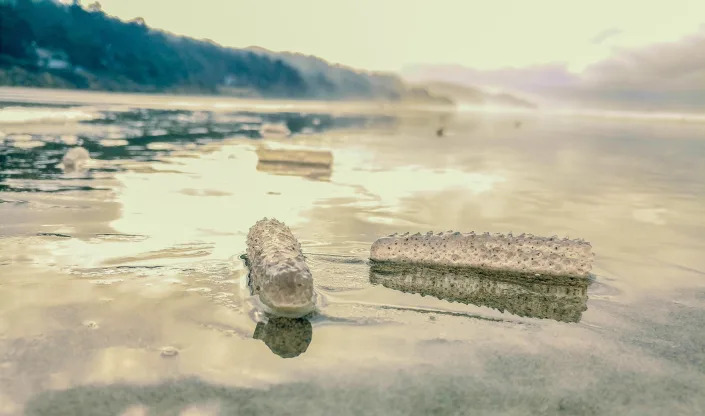#CRYPTID #CRYPTOZOOLOGY
A 'sea pickle'? An animal that can grow to 60 feet long is washing up on the Oregon coast
Hundreds of animals nicknamed "sea pickles" have been washing up on the shores of Oregon, and they are causing quite a stir in the Beaver State.
"They're not the easiest things to describe," Tiffany Boothe, administrator at the Seaside Aquarium in the state, told USA TODAY.
While they are called "sea pickles" based on their looks, the animals are actually a pyrosome. It is a "colony" of multi-celled organisms called zooids, meaning individual zooids will be tightly packed together to form a bigger version of themselves, according to the National Oceanic and Atmospheric Administration.
National Geographic refers to them as the "cockroaches of the sea," and they are able to illuminate the ocean waters.
A single zooid is about the size of a grain of rice, but conjoined together, these colonies can make the creature about 60 feet long and wide enough for a human to fit in, according to Oceana, a non-profit ocean conservation organization.
In 2018, a pair of divers encountered a 26-foot long pyrosome, and Boothe said she heard recently a diver took a photo of themselves riding one.
She added that since the creatures have a body part resembling a backbone, they are more closely related to humans than the similar-looking jellyfish.
'Once in a lifetime': Rare blanket octopus spotted off Australian coast
'2021 is pulling out all the tricks': Fish rain from the sky in rare phenomenon in Texas
As terrifying as this creature may sound, they aren't rare. "Sea pickles" are typically found in the warm, open ocean waters around the world, but strong currents can push them north. They first puzzled researchers in 2017 when they made it all the way up to the Alaskan coast, the first time they had ever been observed that far up north.
Boothe said recent storms in the south Pacific Ocean have created those strong ocean currents to where hundreds of people have spotted pyrosomes throughout the Oregon coast. However, these aren't the 60-foot long ones, with most there measuring around 2-feet long.
"When somebody who hasn't come across one of these on the beach comes across one, it creates a lot of questions because they are so so odd-looking," Boothe said.
So far, there have been no other reports of the creature in any other Pacific states, but if someone does spot the creature, she encourages people to get an up-close look at them. If they're washed up on shores, that means they are dead.
"If you're interested, pick it up and take a closer look at it. It's not gonna harm you since it's not alive anymore," Boothe said, "It's just kind of an interesting creature to try to wrap your mind around."
As for what they feel like?
"Kind of jellyfish-like. Gelatinous, rigid and bumpy," Boothe said.
Boothe said scientists are still trying to understand the impact pyrosomes appearing so far north have by appearing in the north. Fish have been eating them, but since they have no known nutritional value, it's unknown if they are good or bad.
"These big blooms could have implications in the marine environment that we're just not sure of yet," Boothe said.
Follow Jordan Mendoza on Twitter: @jordan_mendoza5.
This article originally appeared on USA TODAY: Sea pickles wash up on Oregon beaches by the hundreds. What are they?


No comments:
Post a Comment